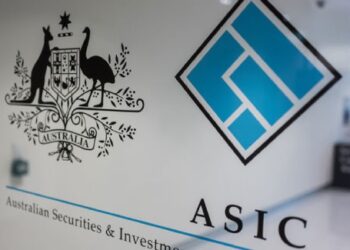In a submission to the inquiry into refundable franking credits being undertaken by the standing committee on economics, the SMSF Association highlighted that the Australian Labor Party (ALP) has overestimated the revenue it will collect from this measure and that it will not target the wealthiest SMSFs as intended.
Based on ATO statistics for the 2014-15 financial year, 311,121 SMSFs utilised franking credits with an average deduction of $11,577 per SMSF and a median value of $5,155 per SMSF, the submission stated.
“More specifically, as of June 2016, 47 per cent of funds are in retirement phase or 267,000 funds. With 60.7 per cent of SMSF members aged over 55, there is approximately 677,000 members either currently affected or will be in the coming 10 to 15 years as they enter retirement phase,” said the submission.
The statistics also show that 245,392 members have average income streams less than $58,000 and the overall average income stream for these members is $39,936, it said, indicating that the refund of franking credits may form a significant portion of their income.
“With the average asset allocation to listed shares at 31 per cent of SMSF assets and the fact that 62 per cent of funds are invested in listed shares, this is a far-reaching issue,” the submission said.
The ATO statistics indicate that SMSFs in retirement phase have an even higher allocation to listed shares than SMSFs in accumulation phase, which worsens the impact.
“Individuals in retirement phase who have a nil tax rate will lose 30 per cent of their share income,” it said.
The submission also pointed out that while the ALP has stated the policy will target the wealthiest 10 per cent of SMSFs receiving 50 per cent of all refundable franking credits, the introduction of the transfer balance cap last year has “severely limited” the amount that is paid to this 10 per cent.
“In fact, the largest 10 per cent of SMSFs, which encompass funds with assets over $2.4 million, will now be paying tax at 15 per cent on earnings on assets over the $1.6 million limit and, in many circumstances, will still receive the majority value of their franking credits as they use them to reduce the tax liabilities on their earnings,” the submission explained.
SMSFs with assets below $1.6 million and do not receive the age pension, on the other hand, will lose 100 per cent of their franking credit refunds and approximately 10 per cent of their income, it said.
The submission included an example which showed that an SMSF with $900,000 entirely in pension phase would see a 14.2 per cent reduction in income from this proposal, versus an SMSF with $1.6 million in pension phase and $8.4 million in accumulation that would only see a 4.3 per cent reduction in income. This is calculated on a 40 per cent allocation to Australian shares and a 5 per cent return for both funds.



Remember that the dividend paying company paid tax, in cash, to the ATO with respect ALL dividends.
Be aware that the same amount of tax was paid by the dividend paying company whether the receiving shareholder receives a cash-refund or a cash discount off tax.
All franking credit refunds, whether by cash, or tax-discounts are fully funded by the funds provided, in cash, to the ATO, by the dividend paying company.
From a budgetary point of view, a franking credit cash-refund is budgetarily equivalent to a franking credit cash discount off a tax bill.
A $1000 cash refund is $1,000 going out : A $1,000 tax-offset is $1,000 not coming in.
The budgetary effect is the same either way.
Labor’s policy of denying the cash-refunds, but not the cash-discounts of otherwise payable tax bills is flawed.
For example, take two groups of taxpayers ;-………………..
One group has a combined tax payable is $200 Bn,
The other group is a group of SMSF whose combined income is $140 Bn, and they pay no tax because they have a ZERO tax rate.
Let’s imagine all the franking credits issued in a year total $40 Bn.
Scenario 1:……………….
ALL SHARES OWNED BY THE $200 Bn Taxpayers.
In this case the $200Bn tax payers receive the $40 Bn franking credit tax-discount and so the ATO receives only $200-40=$160 Bn tax and $0 tax from the SMSF.
So the ATO total receipts are $160 Bn.
Scenario 2:……………..
ALL SHARES OWNED BY THE SMSF’s WHO PAY NO TAX.
In this case the $200Bn tax payers must pay the whole $200 Bn because they have no franking credits.
Under the existing rules, the SMSFs receive a $40 Bn cash- refund.
So the ATO’s tax receipts are again $160 Bn.
That is, $200 Bn was received from the $200 Bn tax group, but $40 Bn was refunded to the SMSFs.
Clearly the tax receipts of the ATO are the same if ALL franking credits are refunded as cash or offsets.
Since the results are the same at the extremes, any combination of cash refunds: tax offsets will produce the same result.
How can Labor clain “cost” as a reason to deny cash-refunds, but not tax-discounts.?
It will drive money to overseas stock markets and investment funds. Australian companies will need to issue stapled securities via a finance subsidiary carrying interest in lieu of much dividends or issue convertible notes again. By the way, does Mr Bowen realize why Australian companies were able to rebuild balance sheets during the GFC? Who will be taking up rights issues next time?
I expect that the ALP will maintain their current stance until after the election so as to appease the left wingers in the party and save face with the public at large. If they manage to form Government, I would expect the lobby groups to gain significant concessions and the final legislation to be considerably different to the March 2018 proposal. Shall wait and see. Lobbyists – get ready to sharpen your knives!
Labour is trying to buy votes and this is just a rort by a party that has no financial plan or care for people especially retirees.
We may as well kiss goodbye to superannuation in this country if labour gets in as we return to the days when super was non existent. I hope Australians have enough initiative to see through this Labour opposition and vote them out for the stupidity they represent.
Is this not more about protecting the current investment strategy. If the refund of franking credits gets up with a labour win everyone will need to reassess their investment strategy. There will be losers. I think the next step might be to get rid of the retirement exemption completely and tax everything at 15 %. Just a thought.
Here’s the deal. If and when Labor get in as a government the push will be to limit SM, SF attractiveness v industry super. Removing tax refunds for company tax paid is the first, the next LRBA measures and after that Trustee education. The next Federal government vote will make the difference. That’s where the lobby efforts should lie.
Just about all funds receive franking credits, why do we keep referring to SMSF accounts only?
Because pooled funds are mostly unaffected by Labor’s franking policy as they have lots of members in accumulation phase so have lots of tax liabilities to soak up franking credits. I.e. a big fund could have $5m in contribution tax, and accumulation phase earnings tax. Then use $5m in franking credits to pay this tax. They then debit the accumulation accounts the tax paid and keep the franking credit for fund admin, and credit any remaining to members accounts.